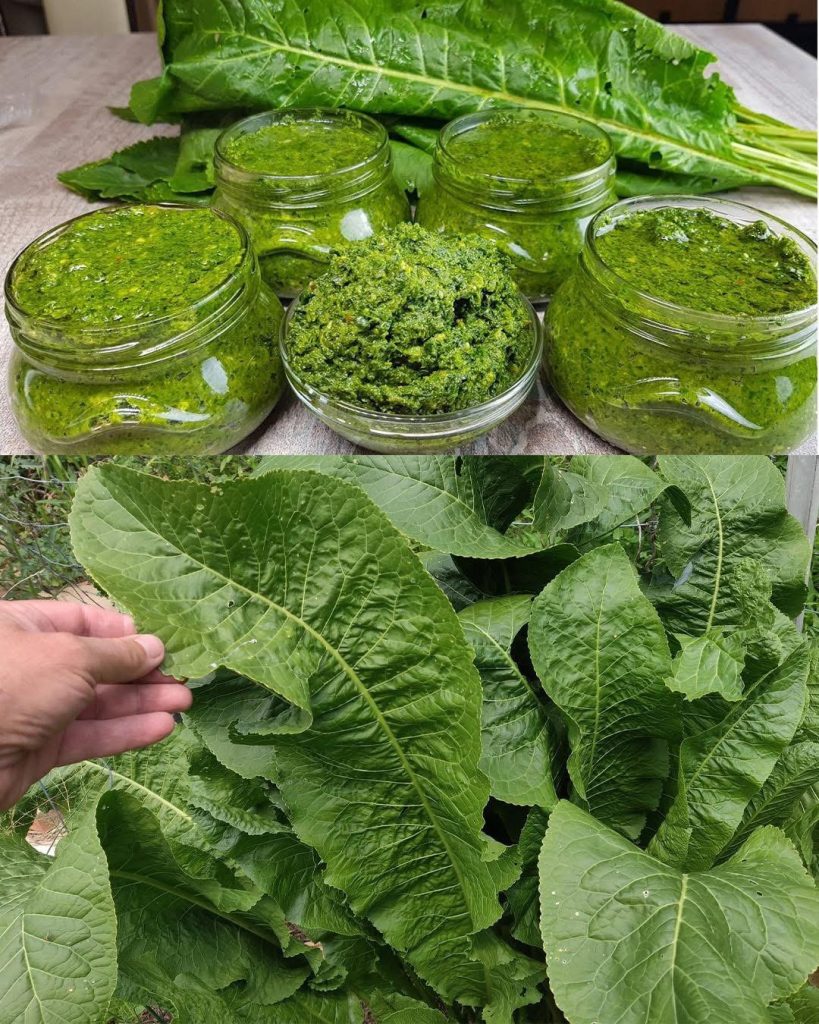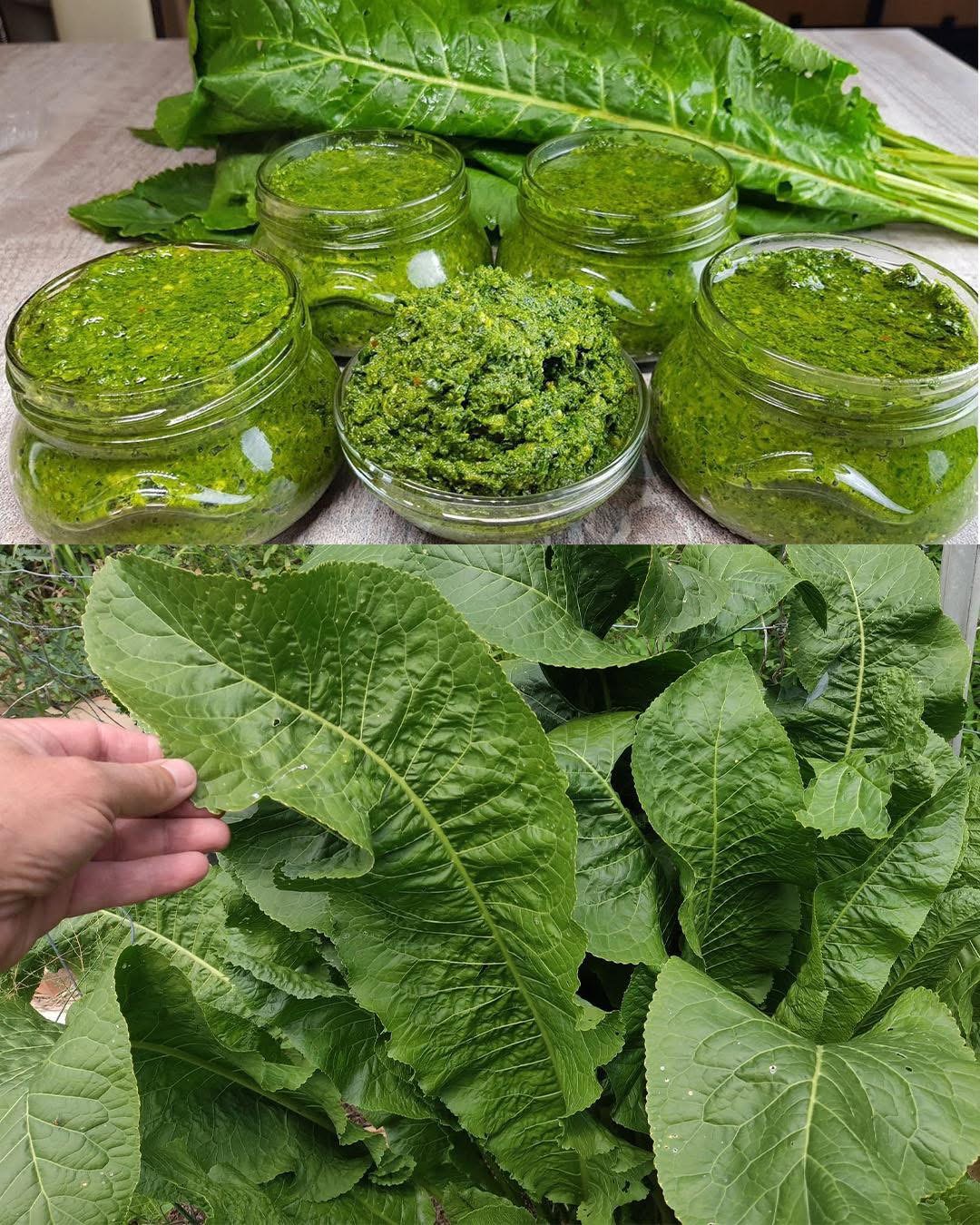Horseradish Leaf Chutney Pesto Recipe A Nutritious Green Wonder

Introduction:
Horseradish is often known for its pungent root, but its leaves are a hidden gem of the garden. Rich in nutrients, horseradish leaves have a peppery kick that brings life to sauces, pestos, and chutneys. Used in Eastern European and Southern cooking traditions, these leaves can be transformed into a zesty and medicinal chutney or pesto that delights the senses and nourishes the body.
Ingredients:
- 2 cups fresh horseradish leaves, washed and chopped
- 1/2 cup fresh coriander (cilantro) leaves (optional, for balance)
- 2–3 green chilies (adjust to taste)
- 1/4 cup roasted peanuts or walnuts (or any nuts of choice)
- 4–5 garlic cloves
- 1-inch piece ginger
- Juice of 1 lemon or 2 tbsp vinegar
- 1/2 tsp salt (adjust to taste)
- 1/2 cup olive oil or mustard oil (traditional)
- 1 tbsp sesame seeds (optional for nutty flavor)
- 1 tbsp grated horseradish root (optional for added punch)
Instructions:
Preparation Method:
- Clean the Leaves: Wash the horseradish leaves thoroughly and chop them roughly.
- Roast the Nuts: Lightly dry roast the peanuts or walnuts to enhance their flavor.
- Blend the Ingredients:
- In a food processor or blender, combine horseradish leaves, garlic, ginger, chilies, nuts, and sesame seeds.
- Add lemon juice, salt, and oil gradually while blending until it reaches a smooth yet textured consistency.
- Taste and Adjust: Add more lemon juice, salt, or chilies as needed.
- Jar It: Store in sterilized jars. It keeps in the fridge for up to 1 week or can be frozen for longer shelf life.
Nutritional Profile (per 2 tbsp serving – approx.):
- Calories: ~90 kcal
- Protein: 1.5g
- Fat: 7g (mostly from nuts and oil)
- Carbohydrates: 4g
- Fiber: 1g
- Vitamin C: High
- Vitamin A, K, and folate: Abundant from leafy greens
- Calcium, Iron, Magnesium: Present in significant amounts
Full
History and Cultural Significance:
Horseradish has been cultivated for over 3,000 years. Ancient Egyptians and Greeks used it medicinally. The root is often associated with Passover Seder traditions, but the leaves have been used traditionally in Eastern European households for making healing broths and sauces. In rural Indian kitchens, spicy chutneys from leafy greens like mustard and horseradish are used to stimulate digestion and preserve food.
Health Benefits:
- Anti-inflammatory properties: Thanks to glucosinolates and antioxidants.
- Supports digestion: The spicy compounds increase digestive enzymes.
- Rich in fiber and micronutrients: Great for heart and gut health.
- Detoxifying agent: Helps cleanse the liver.
- Immune-booster: High in Vitamin C and bioactive compounds.
Formation (Science Behind the Spice):
Horseradish leaves contain sinigrin, a glucosinolate compound that breaks down into allyl isothiocyanate, the spicy component. This compound is a natural antimicrobial and anti-cancer agent. When blended or chewed, enzymes activate this chemical transformation, releasing the peppery heat.
For the Lovers of Flavor & Fire:
This chutney/pesto is ideal for:
- Spicy food lovers
- Keto or Paleo eaters
- Fermentation enthusiasts (it can be fermented!)
- Herbal medicine fans
- Garden-to-table chefs
- Vegan or plant-based diets
Pair it with:
- Hot rice or dosa
- Spread on toast or flatbreads
- Use in wraps and sandwiches
- Toss into pasta or mix into yogurt for a quick dip
Conclusion:
Horseradish leaf chutney is more than just a condiment—it’s a celebration of heritage, nutrition, and bold flavors. Often overlooked, these verdant leaves are not only edible but deeply medicinal. With this recipe, you turn a backyard green into a gourmet powerhouse.
